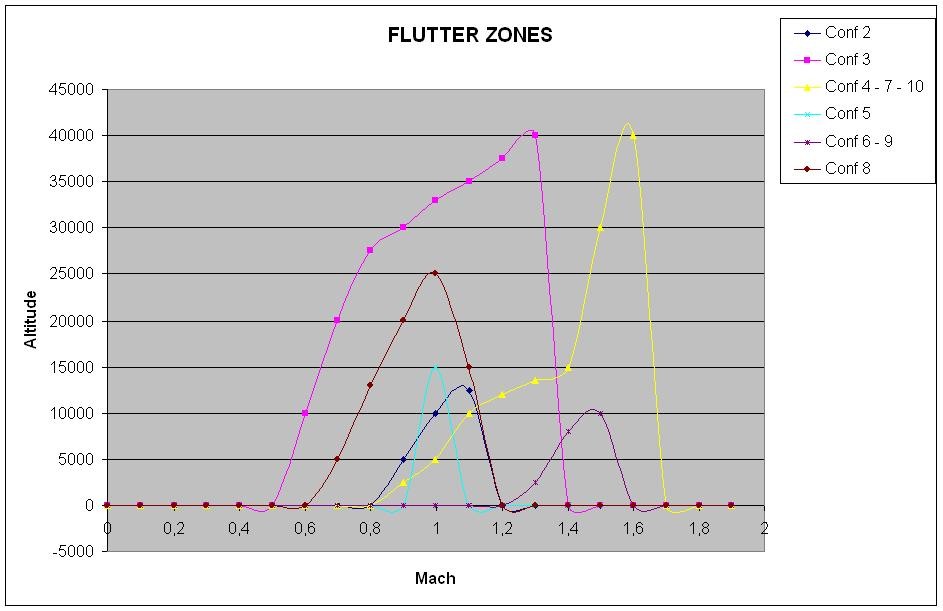This quick article is about something fairly unique to BMS. Actually it may be the first time that anything like this has been done in a PC flight simulator–at least 100% realistically. Continuing down the road of “flight model perfection”, our flight model coder found another gem to code–the new funky chicken: Stores Fluttering, or technically, Limit Cycle Oscillations (LCO). LCO was modeled off real-world F-16 studies/technical papers by the American Institute of Aeronautics & Astronautics (AIAA) and actual flight test data from those papers. But, what the heck is an LCO?
Straight from the F-16-1 Technical Order:
A limited amplitude constant frequency oscillation (commonly referred to as limit cycle oscillation or LCO) may occur with certain stores loadings. The LCO (typically 5-10 cycles per second) may occur in level flight or during elevated g maneuvers. The LCO may appear as buffeting or turbulence similar to that experienced during normal transonic buffet, but the buffeting is a constant frequency, lateral acceleration from side-to-side or, in some cases, vertical accelerations up and down. The magnitude generally increases with increasing airspeed and/or load factor. Other cues of LCO include significant vertical movement of the forward area of wing stores, especially wingtip launchers and missiles; this motion is typically up and down, but may also follow a circular pattern. In addition, cockpit instruments may become difficult to read as the LCO amplitude increases from moderate to severe. Within published carriage limits, LCO is not detrimental to the aircraft. LCO susceptible loadings include air-to-surface and air-to-air loadings and associated down loadings. If LCO is encountered and is uncomfortable or distracting, reduce airspeed and/or load factor.
In English, this is basically an aerodynamic phenomena that happens with certain combinations of stores on the aircraft and their interaction with each other and the rest of the F-16 airframe. It is a light buffeting that can be “felt” in virtual flight by the nutation of the Flight Path Marker (FPM) and a light turbulent-like sensation on the wings and airframe. It only happens with certain stores configurations under certain flight conditions.
The stores on the aircraft actually moving has even been implemented, just like the real aircraft in the video above. The flutter happens in a small band around each of the lines depicted below in the second graphic.


Somewhat related to LCO, BMS has also implemented a complex buffeting model that can be seen and felt in flight during maneuvering–especially in the low speed/high AOA region and in departures from controlled flight. This effect is also dependent on flight conditions–airspeed, AOA, altitude, stores, gross weight, etc. It is not a hacked-in, one sensation fits all effect.
We’ve put flight back in flight simulation. Hope you enjoy it!
LCO in BMS is based directly off the test & evaluation paper published by the AIAA Journal of Aircraft:
Dowell, E. H., Thomas, J. P., Hall, K. C., and Denegri, C. M., Jr., “Theoretical Predictions of F-16 Fighter Limit Cycle Oscillations for Flight Flutter Testing,” Journal of Aircraft, Vol. 46, No. 5, 2009, pp. 1667-1672.
And the paper:
Thomas, J. P., Dowell, E. H., Hall, K. C., and Denegri, C.M., Jr., “Virtual Aeroelastic Flight Testing for the F-16 Fighter with Stores”, Duke University, Durham , NC

